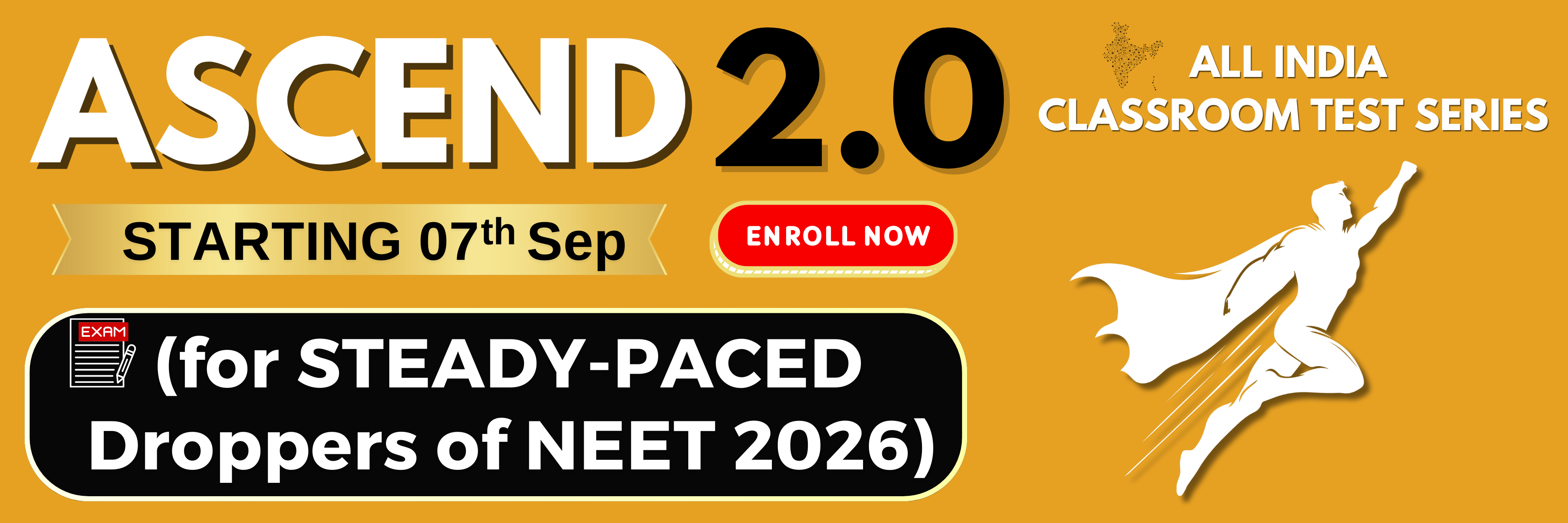Assume that the corner of \(O\) of the room is the origin, and the axes \(x,y,z\) are along the edges. The three walls meeting orthogonally at \(O\) are perfect mirrors. A ray of light travelling parallel to the vector \(-(\hat i+2\hat j+\hat k)\) is incident on the \(y\text-z\) mirror (wall). The emerging ray, after all reflections, will be along:

1.
\(\hat i-2\hat j-\hat k\)
2.
\(\hat i+\hat k-2\hat j\)
3.
\(-\hat i+2\hat j+\hat k\)
4.
\(\hat i+2\hat j+\hat k\)

To unlock all the explanations of this course, you need to be enrolled.

To unlock all the explanations of this course, you need to be enrolled.

| 1. | normally from the surface \(BC.\) |
| 2. | normally from the surface \(AC.\) |
| 3. | either from the surface \(BC\) or \(AC,\) normally. |
| 4. | either from the surface \(BC\) or \(AC,\) at an angle of emergence greater than \(60^{\circ}\) but less than \(90^{\circ}.\) |

To unlock all the explanations of this course, you need to be enrolled.

To unlock all the explanations of this course, you need to be enrolled.
| Assertion (A): | If two converging lenses are introduced into the path of a parallel beam of light, the emerging beam cannot be diverging. |
| Reason (R): | The converging lenses have positive powers. |
| 1. | Both (A) and (R) are True and (R) is the correct explanation of (A). |
| 2. | Both (A) and (R) are True but (R) is not the correct explanation of (A). |
| 3. | (A) is True but (R) is False. |
| 4. | (A) is False but (R) is True. |

To unlock all the explanations of this course, you need to be enrolled.

To unlock all the explanations of this course, you need to be enrolled.
1. \(40\) cm
2. \(20\) cm
3. \(45\) cm
4. \(60\) cm

To unlock all the explanations of this course, you need to be enrolled.

To unlock all the explanations of this course, you need to be enrolled.

| 1. | remains unchanged |
| 2. | is displaced along \(+y\) by \((\mu-1)Af\) |
| 3. | is displaced along \(-y\) by \((\mu-1)Af\) |
| 4. | is displaced along \(+x\) by \((\mu-1)Af\) |

To unlock all the explanations of this course, you need to be enrolled.

To unlock all the explanations of this course, you need to be enrolled.

1. down by \(1~\text{cm}\)
2. down by \(2~\text{cm}\)
3. up by \(1~\text{cm}\)
4. up by \(2~\text{cm}\)

To unlock all the explanations of this course, you need to be enrolled.

To unlock all the explanations of this course, you need to be enrolled.

1. \(15^\circ\)
2. \(45^\circ\)
3. \(75^\circ\)
4. \(105^\circ\)

To unlock all the explanations of this course, you need to be enrolled.

To unlock all the explanations of this course, you need to be enrolled.
1. \(1.5\)
2. \(1.75\)
3. \(2.0\)
4. \(2.5\)

To unlock all the explanations of this course, you need to be enrolled.

To unlock all the explanations of this course, you need to be enrolled.

| 1. | \((\mu-1)t\) | 2. | \(2(\mu-1)t\) |
| 3. | \(\mu t\) | 4. | \(2\mu t\) |

To unlock all the explanations of this course, you need to be enrolled.

To unlock all the explanations of this course, you need to be enrolled.
| 1. | \(P_1+P_2\) | 2. | \(|P_1-P_2|\) |
| 3. | \({\Large\frac{P^2_1}{P_2}}\) | 4. | \({\Large\frac{P^2_2}{P_1}}\) |

To unlock all the explanations of this course, you need to be enrolled.

To unlock all the explanations of this course, you need to be enrolled.






